(first posted 9/16/2013. Updated and expanded 4/6/2023) Ed Cole’s bold and daring rear-engine 1960 Corvair was to be Chevrolet’s ultimate answer to all those pesky imports and the other domestic compacts also arriving that year. But within just months of its debut, Cole realized it was not going to succeed in its original mission, thanks to the instant spectacular success of the pragmatic Ford Falcon. A crash program to build a Falcon-fighter was initiated and the relatively dull result was about as different from the Corvair as possible: The Anti-Corvair; otherwise known by its equally uninspired name: Chevy II.
Chevrolet had a lot riding on the Corvair; a bit too much on its swing-axle suspended rear wheels actually. GM made a mammoth bet on Ed Cole’s air-cooled, rear engine baby. The great irony is that although the Corvair essentially failed in its original mission of a low-end, economical compact, hence the decision already in November of 1959 to develop the Chevy II, the Corvair ended up being a surprise success once the sporty and well-trimmed Monza coupe came out in the spring of 1960. The Monza went on to bring in a lot of import owners and intenders, unlike the Falcon and Chevy II. And of course it directly influenced the creation of the Mustang.
By the late fifties, the Big Three’s strategy of ignoring the rapidly swelling growth of imports (and the Rambler) was running out of steam, if for no other reason than because the Big Three’s cars were foreshadowing America’s obesity crisis. The 1958 recession suddenly made Americans (and the Big Three) realize how large and excessive they had become. And the success of the Rambler and Studebaker’s Lark really forced their hand. Compacts all-round was the Big Three strategy for 1960, and they each went about it rather differently. The winner, strictly in terms of sales numbers? The 1960 Falcon (CC here), even if its sales undoubtedly cannibalized the big Ford, almost one-for-one. So the Falcon was not really a profit winner for Ford overall, but the inevitable fragmentation of the market had begun, in earnest.
The 1960 Valiant (CC here) was widely considered a better car than the Falcon, but its controversial Exner styling was all wrong for this class of economy cars. The Falcon hit the sweet spot of the market: cheap, simple, cleanly-styled, economical, and perhaps the most important quality: it was unchallenging, visually and otherwise. What both GM and Chrysler failed to grasp is that in order to move Americans into a compact, it needed to feel like it was “safe” to do so: un-risky in terms of styling, handling, technology, and even resale. The Falcon nailed all the key points; the Corvair and Valiant didn’t.
The Chevy II program obviously was a fast-paced one, given that the go-ahead was given in the late months of 1959, and it appeared in the fall of 1961; that’s some 21 months or so from the green light to Chevy IIs rolling off the assembly lines. And this is for a completely new car. If you ever read that it takes 3-4 years to create a new car from scratch, here’s one obvious exception, but hardly the only one: the 1960 Valiant did it in some 18-19 months.
The Chevy II was a surprising anomaly, given that GM’s body-sharing program was such an intrinsic part of its whole operation. It shared nothing with the B-O-P compacts (Tempest, Special, F-85), which used a lengthened version of the Corvair’s body and also bristled with adventurous technology too: alloy V8, V6, slant four, independent rear suspension, etc. No, the Chevy II was a clean-sheet car; well perhaps a clean back of the envelope car, as there wasn’t really much to it: as simple, boxy and pragmatic as possible. And cheap to build, most of all.
Unlike every other GM car (except the Corvette) the Chevy II’s original (1962-1967) X-Body platform was never shared by any other car. The 1967 Camaro used a significantly different 2nd generation X-Body derivative, as used on the 1968 Chevy II. It shows the huge power and profitability of the Chevrolet Division and Ed Cole at the time.
But GM did take advantage of its later start to give it some features that the Falcon and Valiant lacked, like a proper hardtop coupe with a unique roof.
As well as a convertible, which neither the Falcon or Valiant had.
And lo! Even a three-seat station wagon. Take that, Falcon! Yes, Chevrolet was determined to outdo the Falcon on every point possible; if the Corvair had failed in its original mission, Take II would not.
And that included under the hood. Instead of just a small six, Chevy threw a four into the fight. Why? Chevy obviously needed a new six for its full-sized cars and trucks. So rather than develop a small-block six like Ford did for the Falcon, Chevy created a new six cylinder that it could share across all its lines, and then lopped off two cylinders for an economy four. How’s that for cheap and pragmatic? And a bit unusual, as fours just weren’t big with American car buyers of domestic cars.
Realistically, the 90 (gross) hp 153 CID four ended up in a lot of fleet cars, as well as in the cars of a few thrifty retail Chevy II buyers.
But the little tell-tale I6 badge on the lower fenders was to be seen on the vast majority of Chevy IIs. The 194 CID Hi-Thrift six made 120 (gross) hp, which put it ahead of the Falcon 170 CID six, and about midway between the 170 and 225 inch slant sixes available on the Valiant.The 194 six gave quite decent performance; a Car Life test of a Powerglide-equipped ’62 Chevy II yielded a 0-60 time of 14.0 seconds.
But Chevy was determined to get and keep the II ahead of the competition, and solution was once again highly pragmatic.
So starting in 1964, the tell-tale V8 badge appeared in the fenders II. The 283 was available in both two-barrel (195 hp) and four-barrel (220 hp) versions, making it the undisputed hot rod of the compact class in 1964. But that was just the warm-up act. In 1965, the 327 joined the Chevy II party, in 250 and 300 hp versions. As if that wasn’t enough, for 1966, Chevrolet upped the ante again.
The 350 hp L-79 1966 Chevy II Nova SS was simply in a class by itself; an unbeatable combination in terms of bang for the buck. And now a highly sought-after collectible. Not many survived the street wars they were subjected too.
Chevrolet had already teased a 340 hp 327-powered Chevy II back in 1962, when it built one as a prototype for a dealer-installed package. A Motor Trend review showed it to be a veritable rocket, not surprisingly.
Here is a 1962 Hot Rod article detailing the swap of a 360 hp fuel injected 327 into a ’62 Chevy II. They used over-the-counter parts available to facilitate this, including engines with modified blocks and oil sumps, as well as all the other parts to affect the change-over. Despite the skinny little 13″ tires, the resultant Chevy II scooted from 0-60 in 5.2 seconds, with endless strips of black rubber on the road left behind as a testament.
The resultant car was utterly unprecedented in 1962; a genuine GTO or hemi-killer. Needless to say, many Chevy II’s gave up their sixes or fours for this greater good, and probably many didn’t use all the factory parts either.
The point being is that the Chevy II quickly became the el-cheapo hot rod of choice, for decades on end (has it ended yet?). There was simply no cheaper way to get down the road in a straight line faster than to find a beater Chevy II and drop in the sbc of choice, and…
The result is that finding an unmolested Chevy II, like this coupe here, has become almost impossible. It took several years since I started doing CCs in 2009 until I found these two original Chevy II CCs. Meanwhile, how many hipster-driven Falcons, Rambler Americans and Larks are there on the streets? Is it because there aren’t any original Chevy IIs left, or because their image is so tied up with hot rods?
One thing is for certain: those early V8-swappers quickly came to realize the profound limitations of the Chevy II’s “Mono-Plate” rear leaf springs. It was a perfect example of how the Chevy engineers wrung out every unnecessary expense, creating a single tapered leaf spring that thickened in the center to take the place of the usual pack of leaves. It worked reasonably well enough on the milder versions, but the V8 Chevy IIs were notorious for axle tramp, and drag bars or other stiffeners quickly became the number one aftermarket accessory for anyone hoping to keep the rear tires in contact with the pavement. The Mono-Plates eventually went the way of the Corvair’s swing axles.
Before we leave the Chevy II’s engine compartment, perhaps the most unusual (and likely least common) engine was the 155 hp version of the 230 six, available only in 1964. It had a slightly more aggressive cam, and was lavished with standard chrome engine trim, which oddly was not the case with the V8s. On to the passenger compartment, which wasn’t nearly so well lavished-upon.
Fawn; the favorite color of Chevy II interiors. And this is a Nova, no less, the top of the line. Below it were the 300 and 100. Chevy wasn’t exactly being generous with its interior appointments, unless one sprung for the SS’ decent vinyl. The base 100 really did the expression “stripper” justice. My father-in-law briefly had a Chevy II, which he called “a tin can lined in Saran Wrap”. It was known as the Shitty Little Chevy in the Squires household, rather understandable given that it replaced a late fifties Mercedes 220S with leather and wood.
But plenty of shitty little Chevies were sold in 1962; 403k of them, which was slightly more than the 1962 Falcon’s 397k. And presumably few of those cannibalized big Chevrolet sales, as the ’62s had a banner year too. In fact the Chevrolet Division had the highest market share (29.1%) ever in 1962, thanks to the Chevy II and Corvair sales peaking at 293k units. Ed Cole struck gold twice, with both compact Chevys.
But the compact boom of the early sixties was short-lived; by 1966, the Falcon’s sales fell off a cliff, and although the new 1968 Nova sold decently enough, pony cars and mid-sized cars had become the hot new thing, leaving the compacts fighting for the crumbs. But they enjoyed a resurgence in the seventies, by which time the Valiant and Dodge dominated the segment, looking much like pragmatic Chevy IIs, updated a bit.
Related CC reading:


























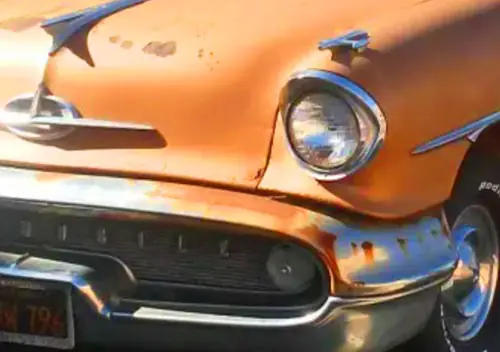
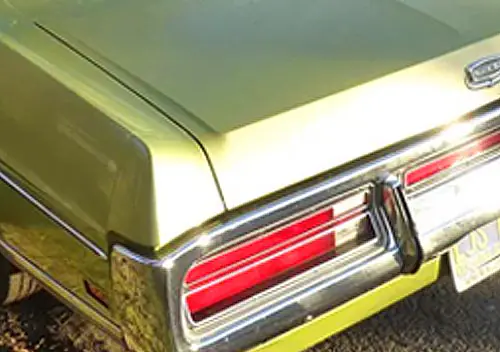
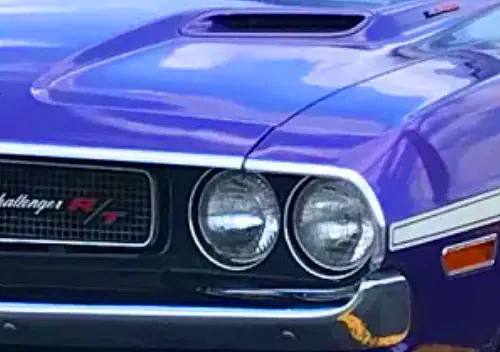

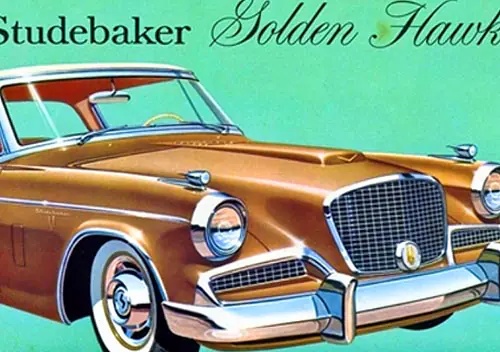
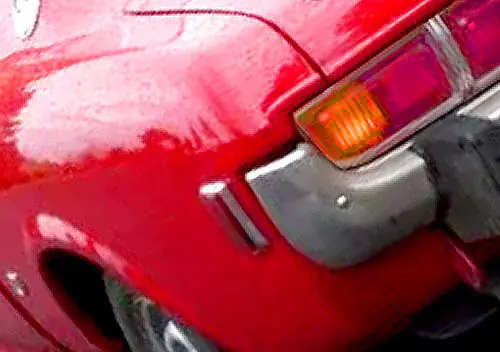

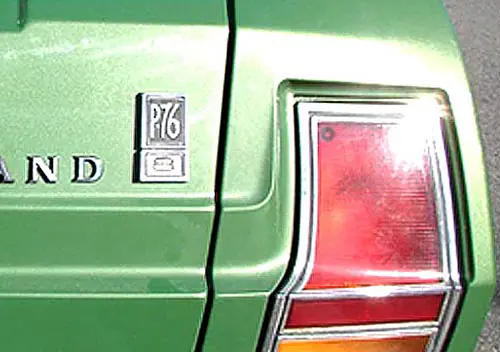
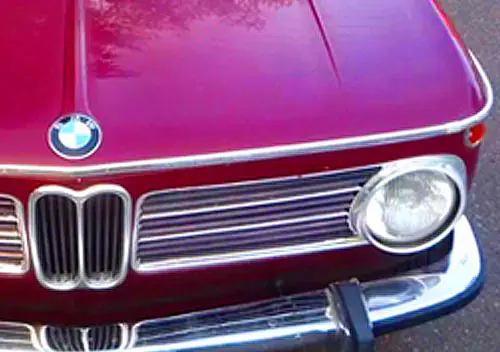
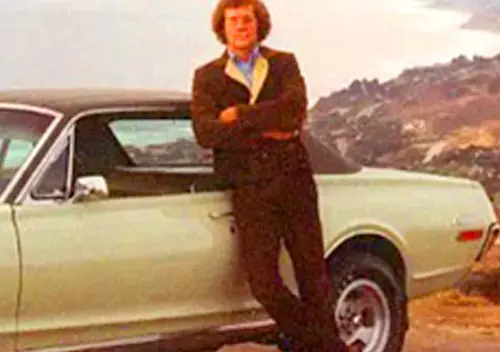

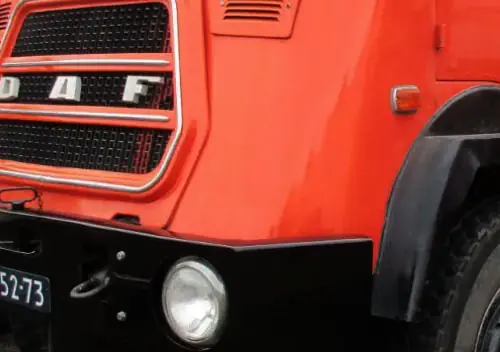
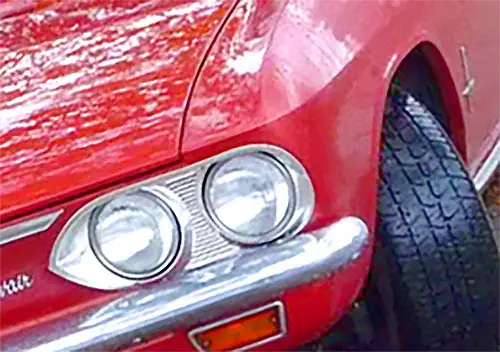
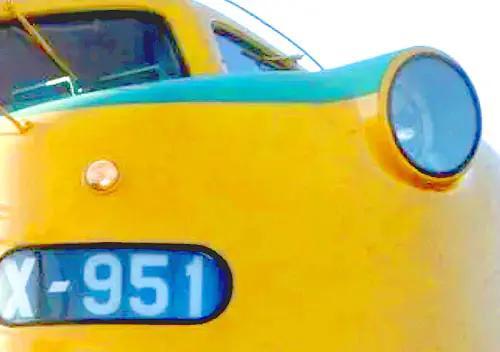
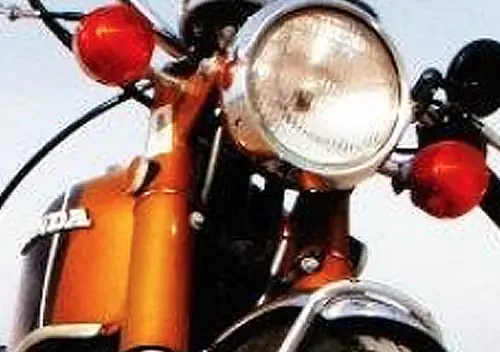
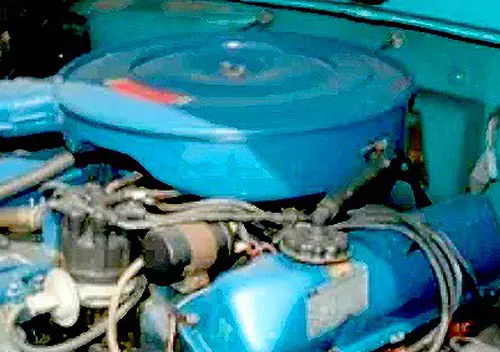
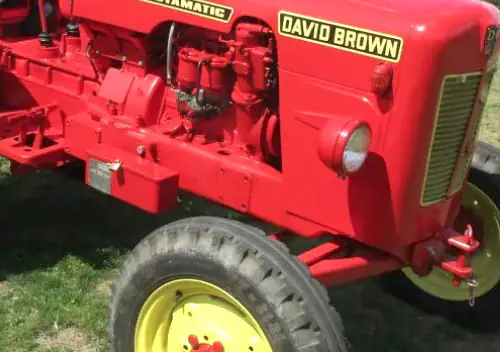


That olive car above is Just. Right.
The first generation Chevy II is one of those rare cars where the pillared 2-door coupe actually looks better than the hardtop (not like the pillared coupe is that great).
Regardless, the SBC swap into an early, cheapo 4-cylinder Chevy II does, indeed, harken back to a day when it wasn’t particularly difficult to come up with a hot, completely elemental, street rod, a fad that began with cheap, flathead Deuce coupes.
Were there any Chevy dealers that became well-known for regularly creating and selling the first SBC Chevy II cars, or was it another one of those cases where GM corporate frowned on the practice and the dealers didn’t ‘want’ to be known for doing it?
I’m not aware of any dealers doing it back in ’62 or so. The 1962 article I referenced is something I stumbled across in more recent years, but I don’t remember where. It was in a Hot Rod type magazine, and written just a few months after the Chevy II came out. They just bought the 327 (no cheap), and did it themselves; perhaps the first II to have a V8-ectomy.
I dont think the dealer small block swaps were done on Novas en masse until the Yenko/Motion/Berger era later in the 60s. In 1962, there was the 409 Chevys, Tri Power Fords and Pontiacs and the Max Wedge Mopars; I wonder how many of those big cars’ feelings would have gotten hurt by a factory 327 ’62 Nova.
With a well-tuned small block, those Novas are a street terror, supposedly Chrysler developed the 1968 340 Darts and Barracudas to compete directly with the later factory 327 Novas.
I think the sexiness of the Box Novas comes their being so unsexy; just simple, clean lines and trim that are so unapologetically Chevrolet. I like the 66-67s a bit more than the early cars but I close my eyes and see black 64 convertible with a red interior and a small block sitting in my garage.
There’s a story in the July 1963 Hot Rod about a Nova retrofitted with not only a 327, but also the rear suspension of a ’63 Sting Ray. A review of the Nova in the May 1963 Motor Trend mentions that they talked to a Chevrolet dealer in L.A. who quoted them a price of more than $1,500 for a 327/four-speed conversion, not including labor, although they didn’t actually do it.
That’s not the one. It wasn’t a magazine project either; just a documentation of a guy who decided to do it, with a few pictures. It might have been in an old Pop Mechanix or something like that.
It was within a fairly short time period after the II debuted; and It was in SoCal (no surprise). They were keeping the three speed and the rest of the car’s chassis intact, but they hadn’t yet really done much serious driving with it yet. A bit of concern about the chassis, rear end and transmission was clearly conveyed. I’m sure it turned into an on-going project.
I must have ran into this article in the past few years somewhere, because I can still see the pictures in my mind. Or maybe that means I read as a kid, when the memory banks were still fresh?
Well, there’s the following sentence in the Chevy II Wikipedia entry:
“Although the Nova was not originally available with a V8 option, it wouldn’t be long before Chevrolet V8s were offered as dealer-installed options (between 1962 and 1963), up to and including the fuel-injected version available in the Corvette.”
Of course, it’s Wikipedia, so who knows.
With more thought, though, I can’t really envision any dealers swapping V8s into the early cars, for the simple reason that I would imagine that the rest of the drivetrain wouldn’t be up to the task.
So, for a warrantable early Chevy II to be sold, new, with a V8 dealer swap, they’d surely have to replace a lot of other parts, too, like the rest of the drivetrain, as well as increasing the brake size, making for quite a pricey overall package.
Does anyone know what else, exactly, was changed when Chevrolet finally got around to offering the 283 in the Chevy II in ’64 (not to mention the 300hp 327 in ’65)? Surely, those had much stouter drivetrains and brakes than the weak basic four and six cylinder models.
I don’t buy it. Some dealers might have been willing to install a V8 (see auwm’s comment above), but it was not a “dealer installed option”. Back then, many options on the lists were dealer installed, including air conditioning. But in order for it to have been a “dealer installedoption”, it would have to have been on the official books and warrantied.
The 1964 V8 Chevy II received a number of changes, similar to what the V8 Falcon and Mustang received: 5 lug hubs, bigger brakes, 14″ wheels, stronger rear axle, and heavier springs and such. These components were (and still are) considered indispensable to anyone converting a Chevy II six to V8.
BTW, PN, it is true. Chevy made news in 1964 when they were the only company – then – to offer a 4, a 6 or a V8 all in the same car. Ford became the second, in the late 1970s Fairmonts…but quickly yanked that miserable 255 cu. in. V8 from service. The six was stronger, more torquey and more reliable.
The Fairmont may not have been available with the 255 for long, but it eventually got the 302 as an option if I’m not mistaken.
Fairmonts were available with the 302 in 1978-79, then the 255 in 1980-81 (IIRC, in 1981 the 255 was fleet sales only, intended for police use). I don’t think the V8s were ever very popular.
I’m not positive what car was the second to offer a four, six and V8, but it wasn’t the Fairmont, because I can think of an earlier one. The Mustang II also did this starting in 1975. The Mustang continued to offer all three types of engines through 1986. A few others:
1978-79 Chevrolet Monza (and Pontiac Sunbird?)
1982-85 Chevrolet Camaro and Pontiac Firebird (base models were the only ones simultaneously available with all three types of engines; the four was still listed as available in 1986, but it is believed that none were built)
1981 Ford Granada (first of two years the Granada was built off of the Fox platform; IIRC, the 255 was available in 1981, but no V8 was offered in 1982)
At least some years of the 1983-86 Fox-platform Ford LTD were built with fours, sixes and V8s, but no version of the car sold to the general public was ever simultaneously available with all three. The only model ever sold to the general public with a V8 was the one-year-only 1985 LTD LX, which came with the V8 standard, no four or six. The V8 was otherwise fleet sales only, intended for police use. Fleet models sold to police agencies may have been simultaneously available with all three types of engines.
(I’m not sure if there were also fleet versions of the Fox-platform Mercury Marquis. If there weren’t in the U.S., they might have been available in Canada. Canada did have an equivalent to the 302-powered ’85 LTD LX, called the Marquis LTS.)
In Australia, the Holden Torana, for a time in the 1970s.
Any others?
While those Deuce coupes may have started the trend, don’t forget the most glorious pre-WWII hop-up jobs, born of necessity….those 1939 and 1940 Willys three-window business coupes factory-supplied with that miserable little four-banger that usually met an early death from frustrated owners trying to get it to merely move from a dead stop. How many of them ended up with Ford flathead V8 power? – most all of them, apparently. It didn’t help that Willys flat-out refused to stand behind the engine when its shortcomings and failures became the norm. (Funny, how they were able to iron out the bugs in time to make it the most trusted engine in the world, in WWII Jeeps supplied to every brance of the military!) Trying to find a Willys of that vintage with its original GoDevil four-cylinder powerplant is ten times more difficult than finding a Chevy II with a four under the hood…or a Javelin or Challenger with a six-cyliinder mill under the hood. (They’re out there, but who wants to admit to it?)
I believe CC actually found a factory Willys four-cylinder still on the road, but can’t find it at the moment. Perhaps someone recalls what I remember seeing.
My 5th grade teacher had black Chevy II with the 4-cylinder engine. That seemed so strange to me; almost like my teacher was driving a toy car. After all, the bare minimum of cylinders in a car was clearly six! Everyone knew that. I remember it as having four tail lights, which would have made it the upscale Nova, but with only part of an engine!
The styling of the Chevy II reminds me of an Opel. Those 13 inch tires sure look small now.
Clare MacKichan, who was head of Chevrolet styling when this was developed, subsequently went to Opel and designed the mid-60s Kadett (inter alia), so the resemblance there wasn’t coincidental.
Wikipedia thinks the 1963 Opel Rekord was the first Chevy II inspired Opel, claiming it was designed in Detroit.
The Kadette B came out in 1965 showing a bit of the coke bottle shape also showing up in US GM cars.
The 6 cylinder engine looks a lot like a Vauxhall Cresta engine.Nice cars and better looking than the early Valiant,make mine a 6 with 3 on the tree
I grew up in a neighborhood of two-car families. By the mid 60s, most of them had two respectable cars. The “good car/second car” school of thought had been mostly eliminated, except at my friend John’s house. John’s dad drove a gorgeous 66 Bonneville 4 door hardtop. John’s mom drove a maroon 63 Chevy II 2 door sedan.
I occasionally got rides in the Chevy II. I have no idea whether it was a 4 or a 6. What struck me was watching John’s mom wrestle the manual steering and shift the 3 speed column shift. I was fascinated, as I think it was the first three on the tree I ever saw in action. John’s dad probably got several years worth of earful, as the Chevy II was finally traded on a very nice 69 Impala sedan. With an automatic.
As I think of it, my stepmom had a Chevy II of this vintage in the mid 60s. A white car with the ubiquitous fawn interior. At least her car had the Powerglide. After she married my father, he jettisoned it very quickly and replaced it with a 68 Cutlass.
I’ve seen a number of Chevy IIs in pretty original condition (at least visibly) around these parts, including one with a couple of child seats in the back. I see more wagons than any other body style; I only see convertibles at car shows.
Two interesting details:
First, GM DID downsize its big cars for 1961, albeit not very much and not nearly as much as Newberg thought. The full-size ’61 Chevrolet was 1.5 inches shorter and 2.5 inches narrower than the 1960 cars. Buick, Olds and Pontiac were down, too; the 1961 Buick LeSabre, for instance, was 3.8 inches shorter and 2 inches narrower, while the 1961 Oldsmobile Super 88 lost 5.6 inches of overall length and 3.4 inches of width. Those changes weren’t immediately obvious and were quickly undone, of course — they were really more a tacit acknowledgment that the ’59-’60 cars were a little too much.
Second, Ford later went from a multi-leaf to mono-leaf rear suspension on, of all things, the late Mk 3 Capri, at least in SVE-developed 2.8i form. (I’m not entirely clear on whether the lesser-engined cars got the same treatment.) The single-leaf springs were combined with gas shock absorbers, thicker anti-roll bars (front and rear) and a lower ride height. It was an interesting choice for the Capri, whose rear axle location had always been problematic, but if the British road tests of the period are any indication, the new setup seems to have been a net improvement, although the Capri was still not exactly a model of refinement.
Yes, I’ve been wondering about the downsized ’61 Chevy and its role in the Newberg story, especially since I’ve seen versions of the story that say Cole was talking about launching a new smaller Chevrolet “next year” and “in 1962”.
This happened in August 1960. If he said “next year”, then i bet he was referring to the slightly smaller ’61, especially since in those days “Chevrolet” meant full size car; if he was really talking about the Chevy II, he would probably have said a new compact car line/model.
So maybe Newberg heard the right thing, but over-reacted to what in the end was simply a return to the the standard B- and C-body separating after the forced marriage in ’59-’60.
Your theory doesn’t quite hold up. Everyone in Detroit knew what the others were building (roughly) some months or more before they came out, from tooling orders, loose lips, early dealer info, etc… By August 1960, 1961 Chevys were just about ready to roll down the line, and the fact that all the GM full size cars were an inch or two or three smaller (very little, actually) could not possibly have been any kind of secret. Detroit just didn’t work that way.
But I wasn’t at the party, so I can’t say anything for certain. But the story makes more sense in terms of the Chevy II, because it was truly an all-new car, significantly smaller. That’s something someone would have picked up on in overhearing it.
I wonder if by August 1960, GM beginned to make plans for the “senior compacts” Tempest/Special/F-85 to turn them into mid-size/intermediate for 1964 with the addition of the Chevelle for Chevrolet along with the return of the El Camino?
Speaking of El Camino, there was once a proposal for version based on the Chevy II. https://macsmotorcitygarage.com/another-bow-tie-never-was-a-1962-chevy-ii-el-camino/
My mother purchased a ’62 Chevy II in 1967 or 1968. It was a four banger with Powerglide. The indication on the selector was off so what looked to be neutral was drive – I am told. On my parents wedding day, my dads aunt had shuttle duty. In drive (low) so attempted to run on the interstate. A rod decided to see the world. The fix was of low quality as the exhaust manifold fell off at speed and the starter dropped into the steering linkage. Despite this not really being GM’s fault, my father swore off GM ten to fifteen years sooner than most.
Remember the age old dictum: “You can sell an old man a young man’s car, but you can’t sell an old man’s car to a young man”? That saying was never more true than with the Mustang vs. the Falcon.
The reason the Falcon’s sales fell off the cliff in 1966 was because of the Mustang. A bit pricier yes, but so much better looking despite being (mostly) identical under the skin. Did the Falcon have as extensive an options list as the Mustang?
Anyhow, I like the Chevy II, but I think the next generation Nova was a better looking car.
Falcon sales for 1966 were decent even though Ford got rid of the hardtop, convertible and a mid-ranged “Deluxe” model. The big problem was 1967, which was at the height of the pony car wars; Falcon production fell by roughly two thirds. In 1968-69 sales improved for the bottom-end models but not for the Futura.
Plymouth had a similar experience with its Valiant.
In ’66 it had become a short wheelbase version of the Fairlane.
Taken in that context, the hardtop and convert weren’t really dropped, just stretched a bit and renamed. Given it’s weight gain in moving to the Fairlane platform, there really wasn’t any reason for it to exist anymore, it was just trading on a reputation.
I know somebody who dropped an 390 FE into a ’66. The extra width made it possible. Ford could easily have countered the 1968-70 Nova’s 396 option with it’s own 390-428s, but instead elected to upsell would-be big inch buyers to more profitable intermediates and ponycars.
Chrysler also restyled the Dart and Valiant for 1967 and they’ll take 30% of the compact car segment and it might had played a part for the Falcon drop production.
The Australians was on to something when they dropped the 351 Cleveland under the hood of the Falcon Down Under to create the Falcon GT and GTHO. Imagine what if Ford US had put the 351 engine under the hood of a Falcon sedan and wagon?
Dr Lemming: OTOH, the present-day Falcon aficionados are more than grateful for the Mustang’s success, since it means a continuing supple of the many, many parts it and the Falcons share, plus a ready source of upgrades for your baby “bird”, such as 14″ wheels, disk brakes, modern electrics and the like. And for some perverse reason, a mousy-looking 1960 Falcon with some major back-road chops is much more appealing to this old duffer than any Mustang.
Appeals to me too. If I could have one of the cars from my childhood, I’d rather have our neat little ’62 Falcon than the bulkier ’67.
It’s funny, but these days I view the Falcon sport coupe (circa 1968) as better-proportioned and generally better-looking than the Mustang formal coupe of the same era – not to mention more durable because it’s a 2-door sedan. The Falcon could look nattier with a black vinyl top than most cars of the period.
Falcon was a classic example of Iaccoca’s maxim: “Sell the sizzle, not the steak.” Mustang and Falcon were the same basic steak just to buyers the Falcon seemed like boiled meat while the Mustang seemed like it had just come off the grill. That was a classic example of Iaccoca as a salesman and why it was really easy for Lee to accept a K-car based Daytona.
Hey it worked with the Falcon, why not with the K-car?
I agree. Personally, the only Mustangs I think look right with the formal Coupe roofline are the 64-1/2 to 66s. The 67-73s all look like they were designed to be fastbacks
I also find the 66 Falcon design itself to be pretty attractive in my eyes and think they’re very overlooked here in the states. The Aussies really got good use out of the basic 66 body from the XR through the XY and, with the GT, made it a real beast. I will say though that the 4-door was more attractive than the somewhat stubby Coupe.
+1 the early Mustang looked best in formal coupe but a 67 up Mustang fastback looks like it was designed to be a fastback.
It looks like a Holden similarly sized and powered in fact the Chevy 11 engine migrated south to OZ for the EH model and was subsequently cut down into the awful starfire 4 in later life.
No. No and No again The ” Chevy II engine migrated south to OZ for the EH ” line is wrong.
The engine in the EH was was the Holden ‘Red’ motor. 149 & 179 cubes.
Compared to the Chev engines the Holden ones have:
1) An external oil pump & thus a different oil filter location
2) Distributor is located further forward on the Chev
3) Starter motors are on opposite sides.
They have a family resemblance but that’s it.
.
Nice, solid overview and review of this car. And an $1800 Chevy II? I haven’t seen one out here in Rustopia in years. I’d love to at least drive that one, just to experience it.
If you haven’t driven a Chevy II, you haven’t missed much 🙂
They had no real vices (for their time) nor any talents. Bland. They certainly weren’t known for their handling prowess. Steering was slow and dull. Performance with the 194 six and Powerglide: modest, at best. But they were durable, given their provenance.
If I had to choose between the Falcon and the Chevy II, I would go with the Falcon. In my opinion it had better appointments, a more attractive interior and seemed to be better built. The Chevy Ii always had a cheap look and feel about it which I didn’t feel was accidental-it was GM’s non too subtle message that people who drove one of these vehicles where too cheap to drive a REAL(read full-size) car.
The Chevy II exterior has a lot of picky details on a very plain overall shape. I always thought it was designed by the B team. The Falcon is much nicer. Interiors too – the Chevy II dash looks like something from a Rambler with the depth of a Studebaker. The Falcon dash is a low budget version of concepts seen in ’58 and ’61 Thunderbirds and even in more angular form the ’61 Lincoln. It looks particularly good with the padded dash adding more depth. Notice how the instrument cluster is in a pod. Even the similarly designed Falcon doors with the swoop around the door handles are nicer than the Chevy IIs. Heck, even the Falcon door hardware is nicer.
I’ve always liked the original Chevy IIs…’62-’64. Still like ’em today. True they had no real talents except for durability…but it’s a great blank slate from which to build a stylish cruiser.
But my garage is already full…
Had an instructor in sub school in 66 who was driving a 63 ChevyII. It was already beat. Didn’t like them till 66. Think the 66 and 67 especially hit the sweet spot. Had a 68 with the 230 and it did very well.
BTW chevy is great at cylinder lopping as the did it again with the 2.6 (or is it 2.8), the 229, and the 4.3. They hit a real winner with the 4.3, one of the sturdier engines I have had. My SIL just gave it a near death experience when I loaned it to him for two weeks. Returned with no water (1/2 gallon actually in a 3 gal system) and a quart low on very burned oil. Yet it refuses to die.
I am continually going back and forth with myself on what mid sixties car I would have if I could go back and buy one new. Generally the slant six would win despite the cars looks. One of those Chev II wagons with the 230 is always in the mix. That was a useful car. If you must go fast Clifford said that 6=8 and proved it.
Fun to think back. Thanks for the memory Paul.
My mother had a Falcon in the early ’60s, and then a Chevy II. She lent the Falcon to a friend, who promptly wrecked it (may have been a DUI, in those days before DUIs were regarded as seriously as they are now). Then she got the Chevy II. Unfortunately, she passed away a while back, so I can’t ask her for a head-to-head analysis. She probably would have just thought of them as undistinguished basic transportation, which I guess is pretty accurate. (All this was well before my parents even got together and bought the ’68 Impala SS they had when I was born.)
I found one of these in the woods where I hike. The little rectangular grooves on the fender side behind the headlight gave it away although they don’t show in the photo.
Hi, This chevy II looks like it is somewhere in the Pacific Northwest? Olympic panninsula? .
To me, the Chevy II name got confusing when the Chevelle came out. Wouldn’t “II” work better for a mid size and then “Chevy III” for compact?
The ’62 II was whipped up fast, I am sure they had a ‘Plan B’ ready to implement, in case Corvair flopped.
That is an interesting point, you would expect they had more than one option when they chose the Corvair.
It would also explain how the car came about so quickly. John McIlroy from Autoline Detroit commented that if you asked car designers/engineers to do a car in 18 months they wouldnt understand why it would be necessary – perhaps it wasnt in 1960 either!
“air washed rocker panels”
???
Doesn’t every car have them??
No there were a lot of rocker boxes that were sort of sealed on each end back in the day. Not sealed enough that water wouldn’t get in there but sealed well enough that it didn’t get out very easy. So many mfgs took to keeping both ends open or the back end open and connecting the front end to the cowl vent. That way they would “blow dry”. Also a heavy rain combined with the air flowing through them could flush out salt or dirt.
Probably the most unsexy car of it’s day, driven by mostly librarians and school teachers. If the word geek had been used to describe anything then, this would have been amongst the geekiest. Great read
Interesting to note then the 1962 Nova was built in Argentina as the Chevrolet 400 until 1974 (and the 1968-72 body until 1978 when GM closed its Argentine subsdiary until they returned later in the late 1980s-early 1990s). Here a link about it in Spanish
http://www.taringa.net/posts/autos-motos/12338135/Chevrolet-400.html and a couple of vintage Argentine ads http://www.flickr.com/photos/ifhp97/sets/72157624986778944/with/4588028565/
Strange then they didn’t bring the Brazilian Opala in Argentina.
Well it must have been No. 2 in the Argentine market to the Ford Falcon, which was everywhere. Unfortunately the Falcon earned a rather controversial reputation as the car of choice (in dark green) for the secret police during the dark days of the Argentine junta. Many a suspected political dissident or person who was nabbed by the authorities took their last ride in the back seat of a dark green Falcon.
Just the past weekend my brother sent me a DVD of home movies from the 1960s, and there was my uncle’s Chevy II wagon in bright red (with a white top) in several shots. I had completely forgotten about that car until I received the DVD.
These were nice-looking cars, particularly the hardtop and convertible versions. The post-1967 Chevy II/Nova was everywhere when I was in high school…it was the 1955-57 Chevy of the late 1970s and early 1980s.
I always found the chassis of the pre-68 Chevy IIs interesting in that they seemed so derivative. Being so used to the conventional SLA suspension practically all GMs had, and separated front frame section of the later X-bodies, the 61-67s are practically indistinguishable from a Falcon with their full unibody design, the Tension strut style LCAs Ford(and Mopar) just loved in this era, and most alarmingly, that goofy pseudo-MacPherson UCA mounted spring/shock arrangement the Falcon/Mustang are (in)famous for!
The early Chevy II are not a true unibody design. Everything in front of the fire wall bolts on. Here is the front clip unbolted as a unit.
Here is the car with it removed where you can see where the 14 bolts hold the car together.
I have always still consider these cars unibodies. When the car is assembled does it make much difference if the front structure is welded or bolted in place? Both still support the car in the same fashion and the structures are essentially the same. If this car is not a unibody, what is it?
A Hybrid.
Well, I still think this qualifies. Where does it say that a unibody has to be entirely welded? I could see calling a 1968+ Nova a Hybrid because the front structure is supported by a section of a frame. This car does not use any structure for support similar to a frame.
Wiki defines unitary construction as: also known as unit body, unibody, or Body Frame Integral construction.[3] This uses a system of box sections, bulkheads and tubes to provide most of the strength of the vehicle, to which the stressed skin adds relatively little strength or stiffness.
I know not the best source, but by this definition the car qualifies. Anyway it’s a moot point, but we’ll probably have to agree to disagree.
I’m 100% with Bill on this. It doesn’t matter how the components of a unibody are fastened; the end result is a unibody and not a body-on-frame, or a hybrid of that. I know you like to split semantical hairs, but I’m not buying it 🙂
A hybrid of a unibody and BOF would by definition have aspects of both. The Chevy II does not have any aspect of a BOF.
Well if you go by the definition of it being “integral construction” this definitely doesn’t qualify as it is two separate pieces that can be un-bolted from each other.
I guess that we will have to disagree on whether this can really be called a unibody or not, but I think we can agree that it is an usual design.
It is integral, once it’s bolted together. Welding isn’t the only way to construct an “integral construction”. It becomes an “integral construction” upon being welded or bolted or riveted or bonded or glued or joined together in any other way that creates self-supporting structure.
My last comment on this thread….
Thanks Eric, I didn’t realize these had a bolt on front structure like that. Interesting. My comment still stands on the suspension design though. That’s Falcon through and through.
FWIW I always called things like this with bolt on front structures “unit-bodies” and fully welded structures “unibodies”. That’s probably not correct either but that’s how I always said it.
Vauxhall was the first GM mass produced unitary car in 1938 the front subframe carrying the engine gearbox and suspension bolts on as do Holdens which have always been unitary construction, they have no seperate chassis. Vauxhall first did this in 1903 long before GM took ownership of it.
I grew up with a ’63 Chevy II, a 2-door sedan in aquamarine. 194 CID six with the Powerglide transmission (I know that because my mom couldn’t drive a stick).
Very basic transportation, nothing special, but pretty reliable and dependable. And then my dad had bought into a company making water bumpers (used on many buses and other vehicles) and those energy absorbtion systems for safety at freeway exit interchanges. Believing in putting one’s money where his mouth was, he had the stock bumpers removed and replaced with those ugly water bumpers.
Needless to say, Dad lost quite a bit of money buying that company’s stock.
I had a great aunt years ago whose first car I remember was a ’62 Chevy II when she traded in on a ’67 Chevy II which she later traded in on a ’70 Nova, which turned out to be her last car. All gold with gold interiors and six bangers with Slipnslide, er, Powerglide transmissions. She died a spinster… go figure.
My grandmother purchased one of the very first 1962 Chevy IIs, a near twin of that two door sedan in dark aquamarine illustrating the “badge” above. It had the four, three-on-the-tree (in decades of driving my grandmother never had nor wanted an automatic!) and was the base 100 model. She drove that little car for ten years until she quit driving and never had any problems with it (well, the four would “diesel” a bit when you shut it down in hot weather). All of the folks I knew who had them back in the day had similar experiences. Good, reliable basic transportation that sold in large numbers.
This immediately brings to mind the occasional ride I would get in my older brothers friends Nova . Actually It was his friends Dad who would chauffeur us around in a 63 Nova wagon .
Crappy brown in color with 6 cylinder and three speed manual transmission.
I can still picture the pack of Tareyton cigarettes always somewhere in the front area of the interior, also the little dog with the bobbing head sitting on the dash constantly nodding at me in the back seat
Many great memories of heading to Newport Beach for some belly-boarding with my friends (Summers of ’68 and ’69), one of whom drove a ’62 Chevy II 6, with 3-on-the-tree.
Good times!
And one extremely bad memory of not pulling the trigger on a beautiful dark blue ’66 Nova SS that I could’ve had for $1175 in ’71. Still kicking myself over that one.
My grandfather had a ’63 four-door, white with a vinyl and cloth interior in a weird combination of aqua and gray / white houndstooth. He bought it off my paternal aunt when she got married and didn’t need it anymore.
For years he promised the car to me, before selling it to a buddy of his 🙁 .
If the first Valiant in 1960 had looked “safe”, i.e.bland, then Chevy II would have had a much tougher time finding a market because the slant six was so superior. An, Plymouth had lots of great V8 choices to drop in too to compete.
Small town midwest where I grew up rejected the Valiant for its transmission controls as well as its looks. Not only did the automatic have pushbutton control, which wasn’t very popular with these folks, but also the three-speed manual was controlled by a floor shifter in 60-61 and, as strange as it seems today, most wanted it on the column. I remember distinctly that this was one of the points used by American Motors in their “X-Ray” comparisons of other compacts to the Rambler American.
My dad had a ’67 2-door hardtop with a 250 that he really liked. It was a big step up (performance wise) from the ’65 Impala 2-door he had around the same time with a 230 six. He used to say that it was quick enough to beat most larger cars with the small V8’s. It was gone before I got my licence, so I never got to confirm this. Rust took hold, especially around the vinyl roof.
I know they’re completely bland cars in function, but I’ve always loved the styling of the first generation Chevy II. Whenever I come across one, which is all too rare, I’m always amazed by how small they look. It’s one of the few cars – especially from this era – that looks smaller than it actually is. I even like the interior, which I prefer to think of as minimalist and adorned with just a few flashes of that “bowling alley-chic” early 60s trim.
These things were thick in my family. I grew up around scores of them. The humble Chevy II was a simple, reliable thing. If it broke, it as not hard to fix. The basic 230 Six was a fine motor and Powerglide unstoppable. Anybody could hop one up as there were loads of parts around for cheap. No wonder they were so popular.
They only lasted about ten years maximum in Quebec, where huge amounts of tons of salt are spread all over the roads every winter.
Paul this is an interesting post. I am curious as to what the reason is for putting a 4 cylinder in a mid 1960’s US auto. As heavy as those cars were I am sure that little 4 cyl engine was not moving the car quickly(especially with an auto) I looked on the net and the average gas price was 30 cents/gal (http://www.1960sflashback.com/1965/economy.asp) and high MPG’s were not on the minds of most folks. You had to be a true tightwad to get a car like that with a 4 banger. I suspect that a true tightwad in the 1960’s would be driving a 1930’s or 40’s type car. You also mentioned fleet cars but I cannot see many folks renting a 90 HP Nova II
Fours were certainly oddball engines in US cars of that era. As a kid in those years, I don’t recall knowing anybody with a four, which seemed restricted to old Jeeps. When the low price cars switched to sixes in the late 20s (and the Ford V8 in 1932) Americans were quite happy and never returned to American four cylinder cars until the subcompact Pinto and Vega in the 70s. The fours that sold in any numbers in the 50s and 60s were all imports, and folks seemed to accept the four as part of the “import experience”. But as a native midwestern US kind of guy, I can tell you that most buyers of that generation equated a four with a Model T and were happy to leave it behind in favor of the much smoother sixes.
On the other hand, many folks had very warm memories of their Model As, no? The Chevy II four might have had an appeal to some of those thrift old-timers that revered their As.
Among the people I grew up around, Model A’s were fondly remembered, but so was old time radio with shows like the Lone Ranger and the Shadow. But in the early 1960s, I didn’t see anyone eschewing their black and white TVs for radio consoles. Likewise, the A was considered good, but a crude relic from days gone by. Nice, smooth civilized 6s and V8s were modern engines for modern people, at least those midwesterners who bought “real cars” instead of those imported toys that the folks on the coasts seemed to like. 🙂
It is an interesting question – would more people have bought fours after WWII if they would have been offered? Or were they not offered because there was no significant demand. As I think about it, gasoline was relatively expensive in the 1930s as well, yet the four cylinder Ford Model B/Model C withered after the V8 came out. Chevrolet and Plymouth dropped their fours even sooner. Likewise, the inline 6 became the almost universal American engine during that period. My guess is that even in a bad economy, the Americans were relatively prosperous and preferred the smoothness that came with more cylinders. Also, where the four cylinder Model A engine was 200 CID (3.3 L), economical cars like the Studebaker Champion used a 169.5 CID (2.7 L) six cylinder engine and probably got better gas mileage than any Model A ever did.
All good points, and I generally agree. I used to assume nobody actually bought the four cylinder Chevy IIs. Yet in the comments here and in a previous post a while back about the Chevy II four, I’ve been surprised at how many of them had direct experience with them. So they weren’t quite as rare as I once assumed.
FWIW, I think the popularity of import cars in the fifties, most of which were fours, may have made folks a bit more open to the idea.
Unfortunately, we’ll never know what the take rate was on the four, as Chevy II production numbers were solely based on body style, and no stats recoded as to which engine. 🙁
That engine continued to live a long and happy life in the later Jeep Dispatcher (the Mail Jeep), at least while Kaiser was making them up through 1969.
But breakouts are available for 1963! 🙂 2200 Model 100 fours were made (4.4% of total); 1,100 Model 300s (1.4%), and a whopping 470 station wagons (.6%). That tends to suggest they weren’t exactly common, and supports my original feelings on the subject. Maybe the folks who comment on their Chevy II fours were actually sixes?
I’d guess the production rate for the four was somewhat higher in 1962, but the modest degree of interest brought that down for ’63.
It’s still being made: http://www.mercurymarine.com/engines/mercruiser/sterndrives/3.0/ That Mercruiser 3.0 uses a 181 inch version of the Chevy four, built by Chevy until recent years, when Mercruiser started building it themselves.
Wow – a 181 cubic inch four. That would make for some massive engine shake. But the bigger question is if it’s used in a boat, does it need Floating Power-type engine mounts? 🙂
Having driven my grandmother’s car many times as a teen driver (with her sitting next to me and complimenting me on my driving, bless her!), I can state with firsthand knowledge that the four in her 62 ran pretty smoothly. I don’t remember it being any more raucous than the 144 six in a 61 Falcon we owned. And it had sufficient power to keep up in traffic.
You have to put several things in perspective. First off, that 30 cents is equivalent to $2.30 in today’s money. But the standard of living was relatively lower around 1960. Americans’ real income surged very strongly during the sixties, but the Chevy II was designed in 1959. And that was right on the end of the very nasty recession of 1958.
Households were almost all single-earner. Families were large. And many working class folks were earning quite modest incomes still. That $2.30 (adjusted) gallon of gas represented more like $3-4, as it related to actual earning power.
Many folks were still very thrifty then, a combination of having lived through the Depression as well as many still had modest incomes. That was why economocal compacts and imports were so popular in the fifties. The stereotype image of the 1959 American family with two big cars in the driveway of their nice new home is just that: a stereotype.
Anyway, the issue at Chevy was that they needed a new six cylinder engine big enough to also work in their full-sized cars and trucks, as the old six was rather obsolete. So it was easy to just make a four cylinder version as an economy motor.
The Falcon’s base engine was actually smaller (144 CID, 2.3 L) and weaker (85 hp) than the Chevy (153 CID, 2.5L; 90 hp). In 1959, Chevy rightfully assumed that they needed a smaller and more economical engine than the smallest version of the new six (194 CID, 3.1 L). Actually, the Chevy II four felt more powerful than the small Falcon six, because it had a substantially fatter torque curve, a benefit that big fours inevitably have over a similar-sized six.
Also, the Chevy II four was able to undercut the base price of the cheapest Falcon, which was probably part of the thinking too. And the Chevy II only weighed 2400 lbs then, a real featherweight.
By fleet, I meant government and utility fleets, not rentals. Hope this helps.
Of course, the rapidly growing real income of Americans in the mid sixties made the Chevy II four mostly irrelevant, although it did stick around for quite a while. And then Pontiac took up the same basic idea again with their Iron Duke four, and put it into their version of the Nova, although by then that car was much larger and heavier.
Thanks for your comments. It has given me food for thought. I wonder how many of those 4 cylinder Nova II’s still exist with the 4 in it? I know there was a booming business dropping V8’s into those cars. It would be nice to see one with that 4 still in there. But alas I am sure the surviving ones were kitted out with a V8(sort of how there is next to no stock 78-81 Malibu coupes left because they all were Prostreeted out in the 1990’s.
But since we are talking about Nova’s I wonder if one of my fellow readers would explain the purpose of the 1979 Nova. It was restyled in the front end for rectangular headlights instead of the round ones to give it a chance in the upcoming decade of the 80’s but was then dropped in mid 1979 so what was the purpose for the expense to convert the front end? The Camaro kept on with the round lights till it was replaced in 82 for the all new 82 model
Here’s a good video of a souped-up one running:
and another: https://www.youtube.com/watch?v=oKzJv0rWt08
When I was 16 (1970) I purchased a used 1962 300 Series 2-door coupe with a 194 6 cylinder 3 on the tree and promptly replaced it with a built 283 and floor shifter. I left the 6 cylinder badges and it was a devour-er of Mustangs and many others. Today I own another 62 Chevy II (not a Nova) Series 100, 4 door, 153 four cylinder, Powerglide, all original. No radio, not even a cigarette lighter. No arm rests in the back, rubber floor board covering instead of carpet. The only option on this car was the 2 speed Powerglide transmission. I read where people talk about how sluggish and slow they are and I can only surmise that they have never driven one. Yes compared to a V8 I suppose they are sluggish, but the first thing that struck me when I first pushed the pedal was how quick the little 153 was. For it size it has plenty of power. And anyone who knows anything about Powerglides knows that they will wind on and on as long as you hold the throttle down and don’t let up. I don’t drive it on the interstate often but when I do it has no problem at all exceeding the speed limit…lol.
The Citation was rushed to market early, so the square light ’79 Novas were meant to last a whole model year. Sort of like the ’80 Volare/Aspen.
Paul nailed it and beat me to the punch. When I paid $0.26/gal at the discount gas station (probably tractor gas) in 1959 and 1960, I was earning $26.00/week at my part time job. That was for about 28 hours work. In 1961 my earnings took a hit and I was paid about that for a 2 week period. My earnings for the first two years of Navy are considered insignificant and uncounted for social security earnings.
There was a recession in 1957 and I cannot speak for the rest of the country. Jobs were still tough in Farmville, however, for a kid in high school. Seems like the family wage earners had it tough too. I knew some who sent the wife home to live with parents and joined the Navy for a job. They made good servicemen. Results may vary depending on where you are from and what you do.
I really think that durability mattered as much as economy. Chevy developed a reputation for durability once they came out with the 235 with insert bearings in 54 and the small block 265 in 55. Couldn’t have hurt.
Funny thing with the ’62 Valiant, the styling reminds me of a lot of early 2000’s Korean cars. It just has that same weird quirkiness to it, but in a 60’s kind of way. The other thing that came into my mind reading this was that I wonder if the Citation II was a ripoff name of the Chevy II. Just thinking out loud..
The renaming to Citation II was meant by Chevrolet to distance the supposedly improved 1984 model from the disastrously bad earlier model Citations. But nobody was fooled.
Actually, plenty of people were “fooled” because they bought other mechanically similar cars, from J to A to N, but not the permanently damaged Citation name.
They even bought Buick Skylarks which used the actual X body through 1985.
Loved this article as my family had two Chevy II’s. My sister had a ’62 model 300 and my Dad got a ’63 model 300, both 6 cyl and powerglide. Nothing sexy but they were probably the nicest (and newest) cars my family had to date. Both were reasonably reliable and I learned to drive on the ’63. Cars of that era weren’t known to long lasting & we traded it in 1968 with 55,000 miles on the odometer. I remember seeing it on the used car lot later with 35,000 miles showing! A sign of the times.
RERUN ALERT!
I posted this only a couple of weeks ago on the CC piece about a 1964 Chevy II. But it really fits better here. So here it is again with minor editing. Apologies to those who have read it before.
===========================================
My Dad bought a used 1962 Chevy II, in 1965 or so.
This thing was from the midline “300″ series, a white four door sedan with the “big” 194 Six and Powerglide. Red interior. AM radio. Power steering, manual brakes. On the dash was an odd device meant for smokers: the vacuum ashtray. Put your cigarette with dangling ash into its tiny receptacle and vacuum would suck off the ash and deposit it in a jar under the dash, which one could unscrew when full, to empty out. When you were ready, it would suck in the cigarette butt, too. It was a dealer-installed accessory in the 1956-1960 Chevrolets, but it didn’t sell all that well; so this one must have been a leftover installed in this Chevy II by its original selling dealer.
Nobody in the family smoked so we fed the vacuum ashtray with spit-wads, chewing gum, dead bugs, pocket lint and whatever else we could find. Truly this was the most interesting thing on a very boring car.
I remember Dad maneuvering the lightweight, power-steering Chevy II with one finger around street corners in San Francisco. That was the SECOND most interesting thing about it.
I said the Chevy II was boring, and it was. Driven primarily around town on trips of a mile or two, it usually didn’t have a chance to really warm up. But take it out on the highway for a while, even just outside the compact city limits of San Francisco, and the trip could get a lot less boring, if not actually entertaining, as the engine started to make funny thumping noises. Our usual destination on these trips was about ten miles away in Colma, where we’d park the car and go visit relatives (readers from the San Francisco Bay Area will realize that these were DEAD relatives, in some of the many cemeteries that were Colma’s claim to fame before the big Serramonte Shopping Center was built on the other side of the I-280 freeway). Once the Chevy II sat for a bit, the engine cooled and quieted down, but it would start complaining again on the way home, just shortly before we got there and the car was parked again.
Any car person with any experience would know that there was something seriously wrong with that Chevy II. I was not even a teenager yet, and I knew! But Dad kept driving it a couple of miles to and from work five days a week, shutting it down before the thumping began. Finally even he must have suspected that it was time to get rid of it, because he started shopping for a new car. Always a Chevy man, he settled on a 1967 Camaro, a stripper with the base 210hp 327 and an automatic transmission (this particular box had its woes, written about in my comment following the CC article, “Powerglide: A GM’s Greatest Hit Or Deadly Sin?”) but instead of trading the Chevy II, he decided to sell it privately because he could get a little more money that way. That “advantage” was blown shortly after the private sale because…you guessed it…the new owner wanted to drive it farther than Colma. The mighty 194 Six spun a bearing on his first drive past San Mateo, and he was mightily pissed.
You could get a Valiant wagon with a third seat–factory installed in 1960, dealer installed in 1961.
In March of ’62 Hot Rod ran an article titled “360 HP for Chevy II” detailing Bill Thomas dropping a Corvette Fuelie 327 into a new Chevy II using a dealer-supplied kit.
http://smg.photobucket.com/user/conwi1wd/library/Technical%20Images/360%20HP%20for%20Chevy%20II
I’m curious what kind of gas mileage the car got with the 4 cyl ? As I remember, I think they called it the “Iron Duke 4” which replaced the Chevy Vega 4 cyl. in 76.
Not the same engine. Same concept but the Iron Duke was built so it could be machined on the same line as Pontiac’s 301 V8 and use some of the same internals and parts.
Iron Duke 151 does not equal Chevy 153.
Here is a test of the ’68 Nova 4cyl vs VW test. I remember reading it when it first came out.
http://www.ostronic.org/VW/vw-nova.pdf
has any body out there put a 350 Chevy motor in a 1966 American 200 rambler and put header on it with a 350 turbo transmission. and kind of header did you use?
Why would anyone want to do that when there are very capable AMC 340-401 V8’s that would bolt right in with factory parts? If you don’t like the BW box a later TF would bolt right in and is a better transmission than the 350 turbo.
I know the Jeep guys are complaining about AMC V8 cost and availability.
That’s funny all those pics of that white 4 door nova is my car that I still drive
I searched through ’62-’63 Chevy dealer ads, looking for any advertising the V8 swap. Closest I could find was this (Bakersfield, Dec. 1963) evidence of a willing dealer:
My best friend bought a well used and battered 63 Nova SS 2 door hardtop with automatic and the 6. The odometer had gone around at least once. $265 dollars in 1983 money.
Took it to Fl and back from LA with no problem and it was 21 years old at the time. Piled to the window sills and the trunk full to bursting. And it was still running when he sold it to the scrap yard a couple of years later.
He wishes he still had it.
my first car was a 63 Nova 194 w 3 speed ran like a champ but what made me give
up on it was the worn out shift linkage it would hang up at an intersection so get out
raise the hood and try to move the levers If it had a power glide I might have
had it a long time I got the car for 100 bucks in 1971 1OO thousand miles
and no rust
The scarcity/rarity/value thing has hit here in the UK too – once very common straightforward but highly tunable cars, such as the 1970’s Ford Escorts, have all but gone from our roads – which has in turn made those that remain a really hot ticket. Throw in some nostalgia for rally wins and the like – values are now immense.
My only driving experience with these was a test drive of one in the early 80s — my everyday car was a ’64 Dart, I was looking at buying a ’61 Lark from a guy outside of Philadelphia, and for some reason, I took his super-clean ’64 Chevy II into town to get some kind of part to try get the Lark started.
Anyway, I’d always kind of liked the Chevy II styling, so it was surprising to me how unsatisfying the car was to drive — no road feel, a very tinney-road noise echo, not-that-great pick-up, and it seemed to be simply an exercise in automobile construction on the cheap.
Never even thought of a Chevy after that drive, tho’. Gimme a Stude V-8 with overdrive or that Morpar slant-six, torsion-bar & torque-flight combo any day!
i say give those old skool detroiters some donk appeal. Nothing like a nice set of 22’s a slick paint job maebe a krate motor 400hp??? a killer sound system that can shake your nabors teeth lose ,yeah possabilaties
There is either a very nice original, or older restoration, ’63 Chevy II Nova SS convertible in my old neighborhood. Being a ’63, it doesn’t have a V8, which just strikes me as odd for the SS trim. But since none was available yet…there you go.
FWIW, two little items from Popular Mechanics (Nov. ’61): the “Detroit Listening Post” column, whatever its veracity). We get a suggestion here that the Chevy II–as opposed to Corvair–approach had gotten a fair amount of development before it was green-lighted.
(Also, some talk from Mr. Cole of a unitized approach to the eventual Chevelle.)
This makes more sense, they couldn’t “whip up” new car from scratch in less than 2 years.
Same Nov. ’61 issue of PM; Ed Cole re factory parts for the 327 swap:
One curiosity that hasn’t been brought up is that the ’65 Chevy II sedans had a one-year only new roof pressing and rear window that echoed the already-obsolete faux convertible look of the ’62-4 A-body 2 door hardtops in a toned-down form. It was not an improvement over the ’62-4 sedans’ slightly wraparound rear window with crisp corners, and a bigger-backlited, crisper look came back with the ’66 reskin.
For some reason, my dad kept his Chevy II on the road into the early ’70s. First early 60s car I rode in. Probably, the most spartan interior I’ve ever experienced. I’ve rode in base Chevettes, Mavericks, Civics, and Pintos.
> And lo! Even a three-seat station wagon. Take that, Falcon and Valiant!
Wait, didn’t the Valiant wagon offer three rows of seats? I recall that being discussed here last year in the comments regarding how the Valiant used Captive-Air run-flat tires in 3 row Valiant wagons to make space for the rear-facing seat (see service bulletin below). And I found this video below showing off the Valiant’s third row. Ramblers and Larks also offered 3 row wagons; I’m surprised Ford didn’t bother.
Quite right. I will amend the text.
Weird thing is I can’t find a single photo online of a 3-row ’60-62 Valiant or Lancer. The brochures mention them though and one shows the actual seat. Doesn’t look like there’s much room for feet; maybe that’s why it wasn’t popular.
Never gave it any thought, but the Corvair wagon couldn’t offer a third row seat for obvious reasons. Maybe that’s why Chevy felt compelled to offer one on the Chevy II even though Ford didn’t.
oops, pic:
The Y-body wagons were offered in three-seat versions as well, although they were very rare.
Here’s a link to a terrific discussion about the Captive-Air tires:
http://www.forwardlook.net/forums/forums/thread-view.asp?tid=55714
I think this was true of the E-body used by the 1963–1965 Riviera as well. Its frame was derived from the one used on full-size Buicks, but the body shell wasn’t, and while the Riviera was pretty successful, the tension over the one-car-only body helped push the Toronado to share that shell.
(To share that shell for the second-generation 1966–1970 model, I mean.)
This was much later but the Fiero had its own platform and body.
The early X body was used on another car – the Acadian sold by Canadian Pontiac dealers – but I don’t think that counts given how little was changed from the Chevy II.
Actually, it very well might. Obviously, the main point was to spread the tooling costs over as large a number of units as possible, but I think it was also desirable to extend that across distribution channels, to also help to offset those channels’ overhead costs. From a financial standpoint, it’s almost always better to maximize commonality. The fact that GM’s American-market products of that period generally weren’t as obviously badge-engineered as the Canadian Pontiac models was largely a reflection on GM’s skill in developing different-looking cars that still shared a useful degree of tooling commonality, along with the fact that each of GM’s U.S. auto divisions was usually selling in large enough numbers to justify stuff like different engines.
The later X-body clones (Oldsmobile Omega, Pontiac Ventura, Buick Apollo) were almost as similar as the Chevy II and Acadian, which was pretty clearly good for the bottom line. I take as evidence the fact that they stuck it out through the seventies despite often not selling all that terribly well individually. Sales of the Ventura, for instance, probably would have qualified it as a fairly disastrous bomb if it HADN’T been a thinly veiled Chevrolet clone; since it was, Pontiac could afford to keep it around just in case the market happened to swing that way.
Good point.
Some things just go around and come back. I think most Mercedes Sprinters use single leaf rear springs. And in fact the front transverse leaf on a Sprinter is also single leaf, albeit fiberglass. Perhaps monoleaf springs are more common than I thought; I associate them with Chevy II’s, reinforced in my memory by a colleague whose Nova got rear-ended and the springs curled up … but didn’t break.
The Mono-Plate springs were a surprisingly involved effort, and Chevrolet was quite proud of them. I’m not sure the ones on the Chevy II actually ended up saving much if any money over a multi-leaf semi-elliptical spring because the top of each spring was shot-peened under tension. Chevrolet asserted that the tapered single-leaf spring had several advantages, including being quieter and smoother (due to the lack of inter-leaf friction) as well as greater durability because spring stresses were evenly distributed throughout the spring length. In applications where it didn’t have strenuous axle location duties, like the Toronado and FWD Eldorado, it worked well enough. I assume the advantages also apply in transverse mountings where the spring just has to support the mass of the vehicle rather than doing double duty as a control arm.
I can see why people criticize it as being pretty bland, but whenever I saw one I always thought, it might be the only post-1960 Chevy I might consider to buy. Reliable platform in a convenient package that you could do with what you like. It’s like Chevy built a Volvo and didn’t know it. I would bet Chevy wished it would have brought it back instead of the Vega in the 1970’s – it would have been like Nash bringing back the original Rambler!
You can tell that’s an old picture at the top of the article, asking price would be $7995 now.
“[hipsters not into them]… because their [II/Nova] image is so tied up with hot rods?”
So much so that younger ‘car guys’ think of all Novas as “muscle cars”. On a Motor Trend TV show, it had a young guy fixing up his inherited ’72 Nova ‘muscle car’, whiich was just a plain base model with 340 2bbl carb. On You Tube, to some, any old RWD car is a “muscle car”.